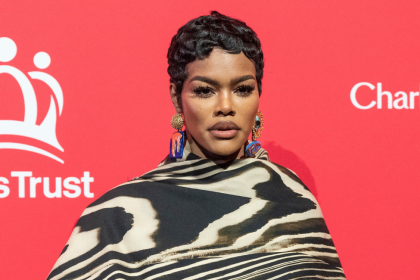For those living with diabetes, managing diet is more than a lifestyle choice—it’s a lifeline. While it’s often suggested that those with diabetes avoid sugary foods, certain fruits, despite their sugar content, can be beneficial if consumed smartly. Understanding these “smart fruits” can help diabetics enjoy nature’s sweetness without compromising their health.
Grapes: A tiny powerhouse for heart health
Grapes are often criticized for their sugar content, but these little gems are full of polyphenols, antioxidants that can be a boon for heart health. Grapes have a glycemic index of around 53, which means they have a moderate impact on blood sugar levels.
The key is portion control. A small handful of grapes can offer a burst of flavor and provide essential nutrients like vitamin C, potassium and fiber—all vital for overall health. The fiber in grapes helps slow down the absorption of sugar, preventing spikes in blood glucose.
Eating grapes in moderation
For those living with diabetes, grapes can be a delicious and healthy snack when eaten in moderation. Pairing grapes with a protein source, like a handful of nuts or cheese, can help further stabilize blood sugar levels.
Bananas: A quick energy source for active days
Bananas are often perceived as a “no-go” fruit for diabetics because of their high sugar content. However, they are also a powerhouse of potassium and vitamin B6, both of which support nerve and muscle function.
The trick is to choose a banana that’s still slightly green, as these contain more resistant starch—a type of carbohydrate that is not easily broken down and absorbed by the body, leading to a slower rise in blood sugar.
The balance of green vs. ripe
A ripe banana may raise blood sugar faster than an underripe one. For a slower, more balanced energy release, opt for slightly underripe bananas and consume them with a protein or fat source to stabilize your blood sugar.
Mangoes: The tropical delight packed with vitamins
Mangoes are often labeled as one of the sweetest fruits around, but they are also packed with vitamins A and C, which are crucial for maintaining a healthy immune system. This fruit has a lower glycemic load than expected, meaning it can be consumed in small amounts without dramatically raising blood glucose levels.
Mangoes contain fiber that can aid digestion, making them a smart choice when you want to indulge in a little tropical sweetness.
Portion control and timing
When it comes to managing diabetes, timing is everything. Pairing mango with a meal that contains lean protein or healthy fat can help balance its sugar content. Avoid eating it on an empty stomach, as this can lead to rapid sugar spikes.
Cherries: Antioxidant-rich and low on the glycemic index
Cherries, despite their high sugar content, come with a relatively low glycemic index of around 22, making them a great fruit choice for those managing diabetes. These small fruits are filled with antioxidants called anthocyanins, which help regulate blood sugar levels and improve insulin resistance.
Dark red cherries, in particular, offer anti-inflammatory benefits that can be helpful in reducing the risk of complications related to diabetes, such as heart disease.
Fresh vs. dried cherries
It’s important to opt for fresh or frozen cherries over dried or canned versions, as the latter often come with added sugars. Consuming fresh cherries as a topping for yogurt or mixed into oatmeal can bring a touch of natural sweetness without causing significant blood sugar spikes.
Pineapple: The vitamin C-rich mood booster
Pineapple is another fruit that often makes diabetics wary due to its sweetness. However, this fruit is an excellent source of vitamin C and manganese, nutrients that can support the immune system and maintain energy levels. Pineapple contains an enzyme called bromelain, which aids digestion and may help reduce inflammation.
Pineapple’s glycemic index is moderate, so it’s best consumed in small portions. A few slices of pineapple can be enjoyed as a refreshing treat or added to a meal as a flavor-enhancing topping.
Best practices for consuming pineapple
Consuming pineapple alongside a protein source like cottage cheese or yogurt can help mitigate the rapid absorption of its sugars. Fresh pineapple is always a better choice than canned varieties, which often come soaked in sugary syrups.
Tips for smart fruit consumption
- Pair fruits with protein or healthy fats to slow down sugar absorption and help stabilize blood sugar levels.
- Monitor portions carefully: Stick to small serving sizes to enjoy fruits without spiking blood sugar levels.
- Choose whole fruits over juices: Eating whole fruits provides you with essential fiber that helps moderate the impact on your blood sugar.
- Check the glycemic index: Knowing a fruit’s glycemic index can help you make smarter choices.
- Stay hydrated: Drinking water before and after consuming fruits can aid digestion and help dilute the sugars from fruits.
Diabetes doesn’t mean cutting out the pleasures of sweet, fresh fruits altogether. The key is to know which fruits offer more than just their sweetness and to consume them in moderation. By making informed choices and pairing fruits with other nutrient-rich foods, you can enjoy a varied and balanced diet that supports your health without compromising on taste.
This story was created using AI technology.
















